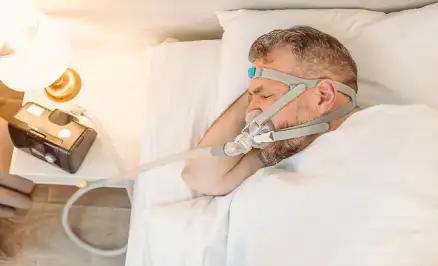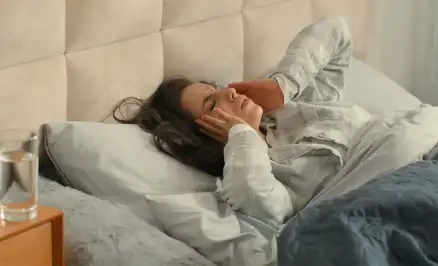
CPAP is Continuous Positive Airway Pressure, a therapy used to treat obstructive sleep apnea (OSA). The sleep disorder is characterised by breathing pauses because of airway blockage caused by relaxed throat muscles while sleeping. It impacts the sleep quality of the individual since they have to wake up several times gasping at night. It can cause various other problems like night sweats, unusual breathing, snoring, headaches, fatigue, mood changes, etc. Individuals diagnosed with OSA are advised CPAP therapy by sleep doctors in Gold Coast.
The treatment involves using CPAP machines to supply a continuous flow of pressurised air through a mask worn by the individual while sleeping. It prevents the obstruction of the airways and offers a good night’s sleep without interruptions. It improves sleep quality and overall health of the individual. Sleep doctors prescribe CPAP therapy after analysing the results of a sleep test conducted for diagnosing OSA. Let us help you understand how CPAP machines work and can help individuals suffering from sleep-related disorders.
Understanding the CPAP Machine
A CPAP machine is a medical device used for treating sleep apnoea. It supplies consistent air through a mask that covers the mouth and nose. The mask stays positioned while sleeping with the help of straps, and it’s connected to the machine’s motor with a tube. The motor is responsible for delivering air into the tube. It consists of an air filter that ensures the air is purified and does not harm the individual due to contamination. The machine maintains a constant flow of pressurised air that allows normal breathing while sleeping to reduce the impact of sleep apnea. It ensures optimum oxygen levels in the lungs without any obstructions that prevent forceful breathing or gasping.
How Do CPAP Machines Work?
The CPAP machines have a timed pressure setting to adjust the airflow. It delivers a low level of air pressure when the person is falling asleep and slowly increases it as they transition into deep sleep. The machine collects the air in the room, filters it to remove pollutants and pressurises it before supplying the air to the tube connected to the mask. The pressurised airflow going into the mouth ensures the tongue and soft palate do not collapse against the back of the throat to cause obstructions. It helps to maintain normal breathing and helps the person suffering from OSA to sleep peacefully through the night. It can be used at home while sleeping or even taken along on vacations.
Types of CPAP Machines
Different types of CPAP machines are identified by the varieties of masks they use for the therapy. Individuals must consult a trusted sleep doctor in Gold Coast to identify the best type. Usually, the type of machine to be used depends on the comfort level of the wearer. The common types include:
Nasal Mask
It is a highly recommended CPAP machine for those who keep tossing around while sleeping. These are worn over the nose for delivering high-pressure air.
Full Mask
This machine has a mask that covers both the nose and the mouth and is prescribed to patients who breathe through their mouths or have nasal congestion.
Nasal Pillow Mask
The CPAP machine with a mask that covers only the nostrils is known as a nasal pillow mask device. It can include prongs that go into the nostrils for a snug fit and consistent airflow.
Uses of CPAP Machines
CPAP therapy is prescribed by Rise Sleep Health Robina doctors for treating mild to severe OSA. The benefits of using this device are:
- Better and uninterrupted sleep at night
- Minimal snoring
- Optimum energy due to prevention of disrupted sleep
- Reduced risk of high blood pressure and heart problems
- Increased insulin sensitivity that prevents type 2 diabetes
- Improved focus, memory and concentration
- Enhanced mood and better social life
Factors to Consider When Using CPAP Machines
The advanced CPAP support offered by practitioners at Rise Sleep Health Robina is a comprehensive package that includes monitoring of device usage and mask adjustment checks to ensure maximum comfort. However, individuals using CPAP machines without support must be careful. They must identify the air pressure setting that suits their condition and use a machine that has a comfortable mask. It must fit snugly over the mouth or nose and supply the required airflow.
The airways of the mask must be sealed firmly to avoid leaking and a consistent flow of pressurised air. The settings must be adjusted to deliver a low flow initially and slowly increase the level to maintain sleeping comfort. If the wearer feels uncomfortable or has a stuffy nose, they must visit a Gold Coast sleep clinic to adjust the device to their comfort levels and prevent leaking. If not used correctly, the mask can cause redness and irritation. Thus, it is best to get the required support.
Wrapping Up
CPAP machines are the most common OSA treatment devices. They must be used for a consistent period to get the best results. It may seem challenging to wear a mask at night, but it can help improve sleep quality and health of the individual effectively.

